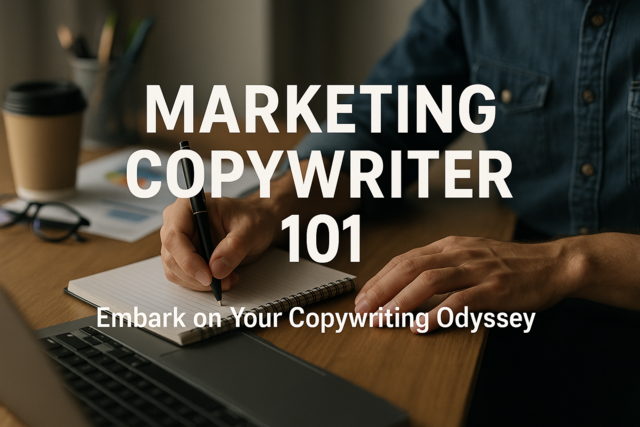Terms to Know
1. Marketing
2. Marketing segmentation
3. Marketing message
4. Target market
5. Marketing plan
6. Marketing strategy
7. Marketing mix
8. Marketing research
The Definition and Purpose of Marketing
If you ask most people for the definition of marketing, you most likely would be told that marketing is the process of advertising products and services to the people who will buy them. While advertising is certainly a part of marketing, it is not the definition. In fact, the process of marketing products or services to consumers is only part of the definition.
By definition, marketing is the process of creating, communication, and delivering offers that have value to consumers or to society. Marketing includes activities such as:
Advertising
Social Media
Sales promotion
Public Relations
Pricing
Distribution
And more
The purpose of marketing is to communicate with the consumer, deliver information, and create value for the consumer. Companies determine how to best market to consumers by discovering what their consumers want and need, then delivering it to them through the products and services they offer.
About Marketing Research
Not all companies in business today conduct marketing research before developing their marketing strategy. Some companies, especially smaller ones, either cannot afford the expense behind it, or they rely on what has worked for them or what they see as working for their competitors. As long as what they are doing is getting the results they want, that is fine.
However, marketing research can be critical to the success of a marketing campaign. For new marketing copywriters who find themselves working for a company or client who uses marketing research to develop marketing strategies, it is important that it is at least understood the basic definition and purpose, as well as what it typically entails. There may come a time when a client gives you a summary of their research, then asks you to create a concept around that information.
The purpose of marketing research is to obtain information from the marketplace - or consumers - to determine the needs and wants of consumers, as well as customers. That information is then used to create a marketing strategy. The types of marketing research that companies conduct are listed below.
Focus Groups. Focus groups are usually conducted at focus group facilities. A moderator runs the focus group and asks the participants questions about a product. A manager of the company usually listens in on the responses, but is not visible to those participating.
One-On-One Interviews are conducted like focus groups, but it is just an interviewer and a consumer. In an interview, the consumer will get to use the product, then answer questions about how they liked it, if they would use it, how much they would pay, why they might need it, or whatever type of information the company wants to get from consumers.
Phone Surveys are a way to validate information gathered from focus groups or interviews to gather what a consumer thinks about a product or service.
Testing. Through testing, a company may introduce a product or service to a smaller market by making it available to that market through advertising. The sales of the product or service would determine the success of the test. Using that information, a company could decide whether or not to introduce the product or service to a larger market.
Determining a Target Market
When a company begins to put together a marketing campaign, one of the first things they will do is pinpoint the target market for the campaign. The target market is made up of the consumers the company wants to reach with their marketing message. The company will develop a message that appeals to that group of consumers and offers those consumers a solution to a problem they face. Naturally, the company's product or service will be that solution.
That said, a company may market their products and services to many different types of consumers who have different wants and needs. All these consumers may fall into a broad target market, but the same marketing message may not be applicable to all the consumers. Through a process called market segmentation, the consumers can be divided into subsets, which each consumer in a subset having common needs and wants. By doing this, the marketing message can be crafted so that it reaches all consumers in a company's target market.
To define the target market, a company will use steps similar to the ones listed below.
1. Define the problem that the company's product or service addresses. In other words, what problem do consumers face that the product (or service) can solve?
2. List characteristics of customers, such as age, income, gender, location, hobbies, et cetera.
3. Determine the primary market. Who has the greatest need for the product, or who will gain the most from its benefits? Who can afford the product? Who buy similar products regularly?
4. Look at current customers. Knowing who currently buys a company's product or service, as well as why, can help the same company target potentially new customers. Chances are, current customers and potential customers share characteristics.
5. Finding out who the competition targets. Who is the competition marketing to? Who is their target market? If a competitor is targeting a customer segment, there is probably a reason.
6. Determine who does the buying. Just because a company sells a product that benefits senior citizens does not mean it is a senior citizen buying the product. It could be a caregiver or a family member. While a product may be intended for a certain type of customer, the marketing may need to be directed at an audience that does not use the product, but purchases it for someone else.
The Marketing Plan
A marketing plan is a business document that contains a company's marketing objectives and strategy for a defined period of time, typically one year. It contains the goals for its marketing efforts, as well as a marketing strategy to meet those goals. For example, capture 60% of the market share. It also identifies target consumers, how the company will reach those consumers, and how the company plans to retain customers so they buy again.
The Marketing Strategy
The most effective marketing strategies focus on research and the right marketing mix to achieve maximum results from campaigns. They combine information gathered from research with the four P's of marketing to produce a strategy that contains the right marketing message for the company's target market. The four P's of marketing are listed in bold and underlined in the paragraphs below, so that you can see how the marketing mix goes into creating a solid marketing strategy.
How Companies Develop a Marketing Strategy
The first thing a company does when creating a marketing strategy is to define the Unique Selling Proposition - or USP - for its product. This is the main benefit that a customer receives from a product or service that makes it valuable to that customer.
Next, the target market for the product is described. In other words, a snapshot of the customers to which the product will be marketed. The company will use the USP, then determine what type of customer has a need for that which the USP provides a solution. For example, if a company is marketing a weight loss product, the USP may be "Finally lose weight and keep it off." The target market would be a customer who has tried weight loss products in the past, but had not yet managed to achieve satisfactory, long-term results. They may be in a certain age range, a certain gender, et cetera.
The marketing strategy also describes the product, such as the value of the product and the qualities of the product. It also includes unique features that make it stand out from competitors. Examples could be all natural ingredients, larger size, money-back guarantee, comfortable fit, etc. The idea of describing the product is to draw out the benefits and features that customers will find valuable - and that make the product stand out from the competition.
A price strategy is also created for the product. The marketing research collected by the company will be used to help create the pricing strategy to compare how similar products are selling, how much customers are currently paying, what price strategy is working best for competitors, and so on. The pricing strategy will be used to ensure the product is not overpriced or underpriced. It will also be used to help the company reach sales objectives in the marketing plan.
The distribution channels for the product are included in the strategy -- or the place where the product will be sold. Will the product be sold in retail stores? Will it be sold online? The purpose of listing the distribution channels is to set forth how and where the product will be available to customers. Marketing research may be used to determine where the product is placed based on where customers are most likely to buy it. For example, it may be a product that sells well in stores where it can be demonstrated, but it does not sell that well online. The distribution channels will also affect advertising for the product. For example, you may create advertisements to drive customers to the different distribution channels through in-store or online sales.
Finally, the promotion techniques that will be used to market the product to consumers are defined and described. This includes advertising, promotional events, public relations campaigns, and direct selling. It also includes how the company intends to advertise and promote the product. For example, Internet ads, newspapers, radio, TV, online video, and so on.
Creating a USP
As learned in the last section of this article, USP stands for Unique Selling Proposition. A USP is a factor that makes a product or service stand out from its competition. Think of M&M® candies. Their USP is "Melts in your mouth, not in your hand". This factor is what makes M&M® candies stand out from their competition. All other chocolate candies will melt in your hand. M&M® candies will not.
In addition to being used as part of a company's marketing strategy, a USP is also frequently used as a slogan. That makes sense, since the USP is what makes a company unique. It is what makes them different, perhaps better, than the competition.
However, when you use a USP as a slogan, the USP is just one line and typically one sentence. You want it to be as brief as possible, because that way you achieve maximum impact and grab attention. If M&M® candies used the slogan, "Our candy does not melt in your hands like other chocolates. It melts in your mouth" it would not have been nearly as catchy or powerful.























